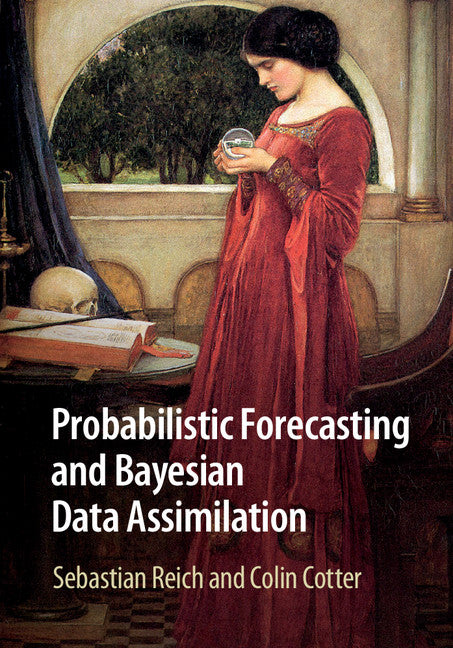Freshly Printed - allow 8 days lead
Couldn't load pickup availability
Probabilistic Forecasting and Bayesian Data Assimilation
This book covers key ideas and concepts. It is an ideal introduction for graduate students in any field where Bayesian data assimilation is applied.
Sebastian Reich (Author), Colin Cotter (Author)
9781107663916, Cambridge University Press
Paperback / softback, published 14 May 2015
308 pages, 70 b/w illus. 7 colour illus. 70 exercises
24.4 x 17 x 1.6 cm, 0.61 kg
'Looking at it again from the mathematician's viewpoint, this is a beautiful articulation of the deep fact that methods which were originally developed to solve specific problems, and to get around specific issues, can be reformulated as special instances of a general theory. This book by Reich and Cotter thus makes an important and potentially very influential contribution to the literature. It is arguably most exciting in that the perspective promises to produce more and better algorithms. What more could one ask of a mathematical theory?' Christopher Jones, SIAM Review
In this book the authors describe the principles and methods behind probabilistic forecasting and Bayesian data assimilation. Instead of focusing on particular application areas, the authors adopt a general dynamical systems approach, with a profusion of low-dimensional, discrete-time numerical examples designed to build intuition about the subject. Part I explains the mathematical framework of ensemble-based probabilistic forecasting and uncertainty quantification. Part II is devoted to Bayesian filtering algorithms, from classical data assimilation algorithms such as the Kalman filter, variational techniques, and sequential Monte Carlo methods, through to more recent developments such as the ensemble Kalman filter and ensemble transform filters. The McKean approach to sequential filtering in combination with coupling of measures serves as a unifying mathematical framework throughout Part II. Assuming only some basic familiarity with probability, this book is an ideal introduction for graduate students in applied mathematics, computer science, engineering, geoscience and other emerging application areas.
Preface
1. Prologue: how to produce forecasts
Part I. Quantifying Uncertainty: 2. Introduction to probability
3. Computational statistics
4. Stochastic processes
5. Bayesian inference
Part II. Bayesian Data Assimilation: 6. Basic data assimilation algorithms
7. McKean approach to data assimilation
8. Data assimilation for spatio-temporal processes
9. Dealing with imperfect models
References
Index.
Subject Areas: Maths for engineers [TBJ], Atmospheric physics [PHVJ], Numerical analysis [PBKS], Mathematics [PB], Computational linguistics [CFX]


